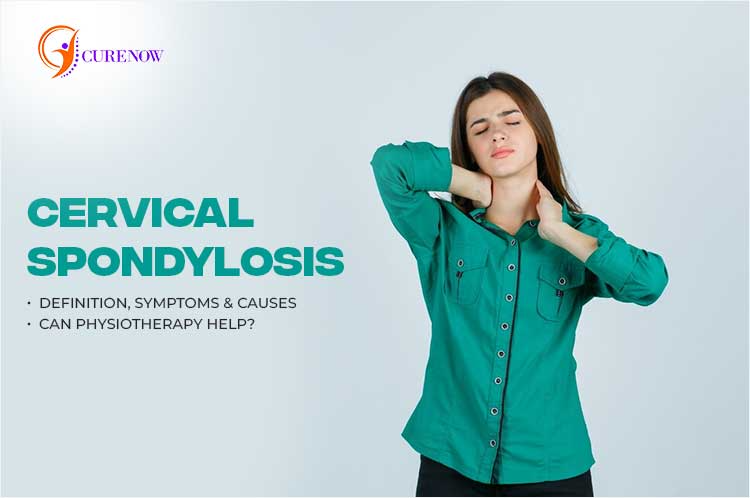
- 06 Dec 2022
- |
- By Admin
Cervical Spondylosis: Definition, Symptoms & Causes | Can Physiotherapy Help?
Often called ‘arthritis of the neck’, Cervical Spondylosis is age-related wear and tear of the spinal disks in the neck, which gradually causes pain and stiffness in the neck.
With dedicated physiotherapy, this orthopedic condition can be controlled, and pain can be reduced, giving relief to the patients, and enabling them to carry on with their regular day-to-day activities with ease.
Definition Of Cervical Spondylosis
The condition wherein there is a natural wearing down of cartilage, disks, ligaments, and bones in the neck is described as Cervical Spondylosis.
As per various studies, it has been found that 9 out of 10 people above 60 can experience some or the other form of Cervical Spondylosis.
Symptoms Of Cervical Spondylosis
In the initial phase, the patients may not experience any symptoms of Cervical Spondylosis, and suddenly one day, several symptoms may arise.
The most common early symptoms of Cervical Spondylosis include:
- Neck pain and/or stiffness, which gets worse when the patient moves their neck
- A consistent soreness in the neck
- Muscle spasms
- Clicking, popping, or grinding sound when the patient moves their neck
- Sudden dizziness
- Consistent and long-term headaches
Causes of Cervical Spondylosis
As age progresses, the spine of a person experiences wear and tear, which changes the condition of the disks between the vertebrae.
These changes are the root cause of Cervical Spondylosis. Some of these changes include:
- The spinal disks in the neck start to degenerate, which makes the disks thinner, and reduces the elasticity of the soft tissues. This is the reason that people aged 60 or more start to feel shorter.
- Due to wear and tear of the spine, some parts of the spinal disks may tend to tear or crack, resulting in a herniated disk. And when it happens, then the particular disk budges out, pressing on the nearby tissues or the spinal nerve, causing intense pain and numbness.
- Often, the cartilage in the joints starts to degenerate, resulting in Osteoarthritis. And when this happens, then the degeneration of the spinal disks accelerates.
- Sometimes, abnormal bone growth starts to occur along the edges of vertebrae, due to extra degeneration of the cartilage in the joints of the vertebrae in the spine. This condition is called osteophytes or bone spurs and has no symptoms.
Physiotherapy For Cervical Spondylosis
Among non-surgical treatments for Cervical Spondylosis, physiotherapy is considered one of the most recommended and result-oriented treatments, that not only gives relief to the patient, but also help them to recover from the condition, and carry on with their normal day-to-day activities with ease.
Depending on the situation and extremity of this condition, the physiotherapist may recommend specific exercises that can:
- Give relief from the pain arising due to Cervical Spondylosis
- Strengthen and stretch the weakened muscles
- Improve the posture of the patient by using traction to gently stretch the joints & muscles
At CureNow, we also provide Computerised Intermittent Traction and DigiMed IFT as part of Physiotherapy treatment for Cervical Spondylosis.
Schedule an appointment with our UK-trained and Certified Physiotherapists at CureNow Wellness, and correctly diagnose the condition of Cervical Spondylosis, and take the first step towards healing.
- Neuromuscular Physiotherapy: This Is How Brain, Nerves & Spinal Cord Disorders Can Be Treated
- Spinal Cord Injury: 3 Spine Physiotherapy Treatments Recommended By Experts
- What Is Cardiovascular Physiotherapy? What Are The Benefits Of Physiotherapy In Cardiac Rehab?
- What Is Musculoskeletal Physiotherapy?
© Copyright CURENOW . All Rights Reserved. Presented By
RISIAR Step In Business Hub Pvt Ltd